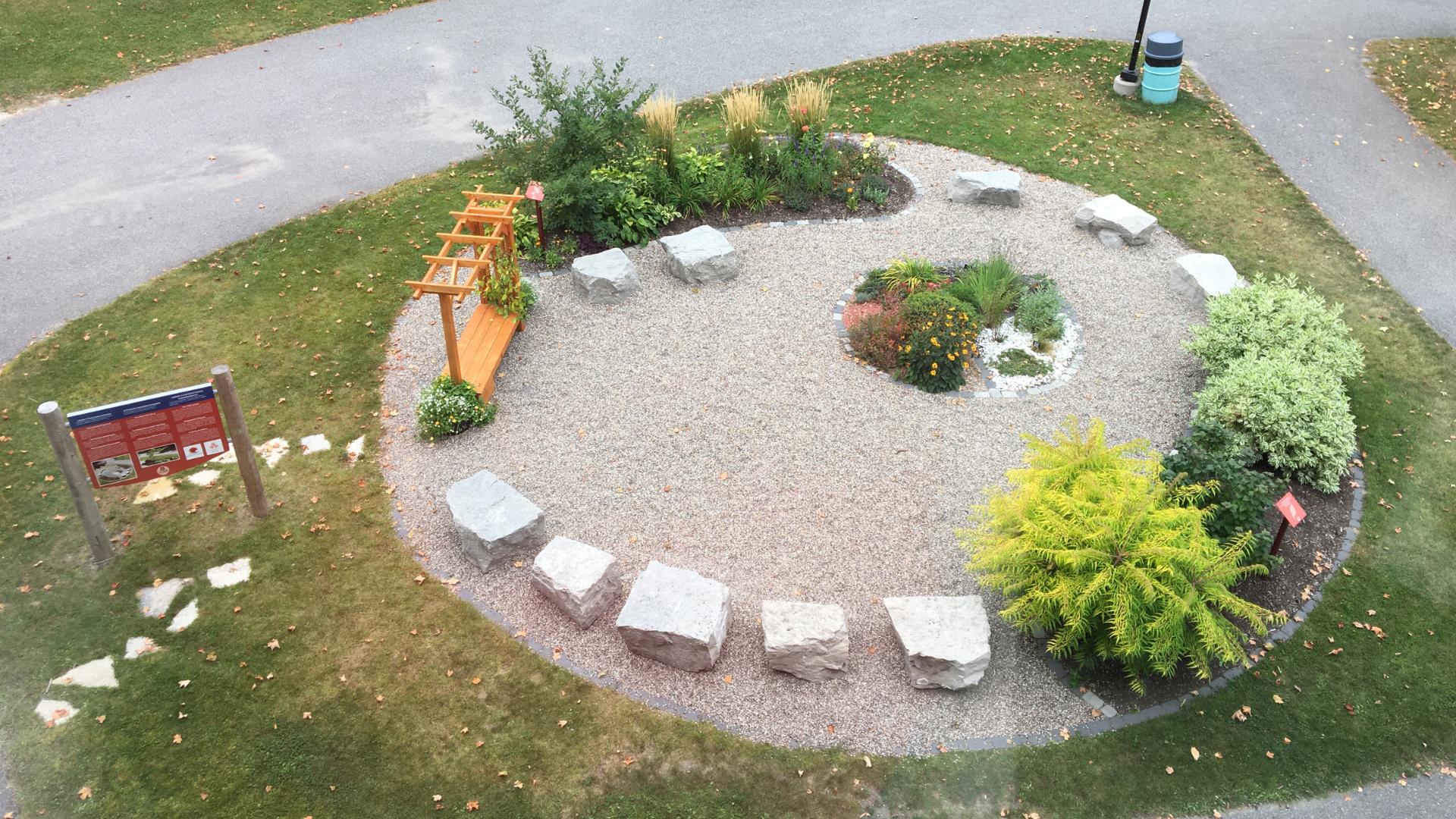It’s amazing to think that just three years ago, during the pandemic, an idea was born that blossomed into the beautiful All Saints Legacy Teaching Garden, which officially opened in May of last year. The fall of 2020 brought with it a new challenge: the need for a safe and welcoming outdoor learning space. Vanessa Kirtz, Head of the Contemporary Studies Department, and Penny Lessard, Resource and Geography Teacher, recognized the importance of providing a space where students could gather without masks and reconnect with nature. Given the toll the pandemic had taken on mental health, having a peaceful spot to reflect was more important than ever. The All Saints Legacy Teaching Garden has truly become a place of solace and growth, benefitting both students and staff alike.
The chosen spot for the garden was an unused area in front of the school that needed a makeover. It already had some existing features, such as a 2008 graduation legacy lilac bush, a tulip bed with 75 tulips donated by the Embassy of the Netherlands to commemorate the 75th anniversary of the liberation of the Netherlands, an overgrown Medicine Wheel garden, and a cairn that contained a time capsule created by the first All Saints High School graduates. The main challenge was to develop an expanded and functional space that would incorporate and preserve all of these existing features.
The project started with the teachers seeking funding. They approached several sources, including the OCSB Experiential Learning Fund, Veterans Affairs, other OCSB funding options, and the school’s parent council. Additionally, they participated in a radio contest and won. The funding acquired through these sources was used, in part, to donate to the Vimy Foundation. The school received one of the last Vimy Ridge oak trees, which was grown from an acorn a Canadian World War I soldier sent back and planted.
With some base funding in place, they hired a landscape designer to pull all their ideas together into a workable plan. Then, it was time for the students, staff, and local community to unite and make the plan a reality. Staff and community volunteers helped move the lilac and cairn, expand the flour beds and medicine wheel, and install rock benches. Four local landscaping companies helped by donating supplies such as the pavers and polymeric sand that the staff installed.
With the physical space laid out, the students from various classes joined in to bring the garden to life. The plants for the garden were cultivated in the school greenhouse and then transplanted by the students. Classes researched the plants in the medicine wheel and created Métis dot art depicting the plants. Other students created a website showcasing the garden and the art and containing all the information about the plants. The tulips from the Netherlands were planted by history class students who had contributed to the organization Face to Graves by researching and writing the life stories of Canadian soldiers who are buried at Groesbeek Canadian War Cemetery in the Netherlands. These students planted the bulbs in the name of the soldier they researched. The school’s woodworking classes built benches for additional seating in the garden. One student volunteered to use a drone to take photos of the garden from above to show the evolution. Another student used her graphic design skills to design a sign for the garden, explaining all the elements of the garden in English, French, and Anishinaabemowin. The school’s Go Green team looks after gardens during the school year, and students needing volunteer hours help out during summer.
The entire project, from concept to completion, took three years and is a testament to the care and dedication of the entire school community. The school held a dedication ceremony in May 2023, where they thanked students, staff, community supporters, parents, the Embassy of the Kingdom of the Netherlands, and Veterans Affairs for making their legacy teaching garden come to fruition.
